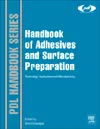Keep That Laboratory Notebook!
The America Invents Act will drastically change the way patents and trade secrets are handled.

On September 16, 2011, President Obama signed the America Invents Act into law. The act is the most sweeping reform to the existing Patent Act since 1952. Many legal commentators state that the new act is merely a codification of current practice under the old act and the judicial decisions that have further defined the law. Nonetheless, the changes are dramatic: the U.S. now grants patents to the first inventor to file, rather than the first to invent, and trade secret holders now have a defense against infringement.
Antedating required an inventor to keep a detailed laboratory notebook. Many of the common practices of keeping a laboratory notebook are a result of the former patent statute. Some of these common practices include signing and dating each page of the notebook, having a space for a witness to sign, and including one project per page. A detailed laboratory notebook was a key piece of evidence used to antedate a patent.
Another common practice was the invention record report, which was a separate document used to describe an invention deemed to be of particular importance that should be reviewed for patenting. In the end, the two methods served the same purpose-to document when the invention was made.
The U.S. is now a “first-to-file” country, so antedating is no longer available. Only the first inventor to file will receive the patent. Thus, an inventor should file first-and often.
This does not mean that inventors should dispense with their carefully written notebooks or invention record reports. As in the old statute, only the inventor (or his assignee) is entitled to a patent. The inventor’s identity must be established. Laboratory notebooks and invention record reports are necessary to determine this information.
The act also provides for prior user rights. Prior use is a defense against infringement for those inventions kept as trade secrets. Laboratory notebooks and invention record reports are also helpful for that defense.

Under the old statute, inventors had one year to file after publishing, selling or using their invention publicly. The same grace periods appear to be available under the act. However, specific grace periods for each bar are not given. Rather, there is a grace period for disclosures made by the inventor or by others derived from the inventor.
But what does “disclosure” entail? Under the old statute, “on sale” and “public use” are mentioned specifically with respect to the 12-month grace period. According to legal commentators, it appears that Congress has lumped the former bars together under the new act and called them disclosures. In the end, it will be up to the Court of Appeals for the Federal Circuit or the Supreme Court to decide. With a first-to-file system, then, the best advice is to file.
In addition to being forced to pay a license fee (or pay for a legal defense), the trade secret is no longer a secret. Patenting a trade secret puts the trade secret into the public domain. Only the patent holder may exploit the now-defunct trade secret for the term patent; however, the “trade secret” is no longer a secret. Loss of secrecy devalues a trade secret as a business interest, because it is no longer a protectable interest. Once an interest is no longer protectable, employees are free to leave and practice the former secret at a competitor’s business. Any term of non-compete or non-disclosure agreement covering the former trade secret is void by an act of law (i.e., the patent statute). Moreover, only the patent owner can defend the patent. If the patent owner chooses not to do so in that specific instance, the former employer is out of luck.
The choices are much better after the passage of the act. Using the trade secret in commerce is a defense to infringement, so the trade secret holder can continue to practice their secret without having to pay a license fee or be forced into expensive litigation. Although the invention may be in the public domain, the patent holder may at least prevent former employees from practicing the trade secret with his competitors. It might be a good idea to negotiate a license with the patent that allows the trade secret holder to defend the patent. In this way, the trade secret holder can protect their former “secret” without relying on the patent holder.
However, the prior use defense is not a gift. First, it is personal to the trade secret owner and cannot be transferred to another by a license. The defense can only be transferred if the entire concern or the entire line of business is transferred. In addition, the defense can only be raised “if such person, acting in good faith, commercially used the subject matter in the U.S. ... and the commercial use occurred at least one year before the earlier of (a) the effective filing date of the invention; or (b) the date when the invention was first disclosed to the public.”
Under the act, it is best to both file first and commercialize first. The defense is limited to those sites where the commercial use was being practiced at the time of filing or at the time of the sale of the business or business line.
In addition to maintaining good laboratory notebooks and invention record reports, it is important to keep records documenting commercial use. The prior use defense is an affirmative defense, which means that the burden is on the defendant infringer to establish prior use through “clear and convincing evidence.” Thus, the mere assertion of commercial use is insufficient.
All patent infringement cases are document cases. They are won and lost on the written record. Good documentation that clearly establishes the first date of commercialization and the sites at which commercialization occurred will go a long way toward successfully asserting a prior use defense and allowing the trade secret holder to continue reaping the benefit of their trade secret.
For more information, contact the author at paul@dalleylaw.com.

On September 16, 2011, President Obama signed the America Invents Act into law. The act is the most sweeping reform to the existing Patent Act since 1952. Many legal commentators state that the new act is merely a codification of current practice under the old act and the judicial decisions that have further defined the law. Nonetheless, the changes are dramatic: the U.S. now grants patents to the first inventor to file, rather than the first to invent, and trade secret holders now have a defense against infringement.
First to File
Until the passage of the act, America was a “first-to-invent” country. That is, the first individual to invent something was the person entitled to patent the invention. If another person filed first, the original inventor could overcome the other’s patent by antedating the patent. Antedating was established by proving that the original inventor conceived of the invention and diligently reduced the invention to practice before the filing date of the other person’s patent.Antedating required an inventor to keep a detailed laboratory notebook. Many of the common practices of keeping a laboratory notebook are a result of the former patent statute. Some of these common practices include signing and dating each page of the notebook, having a space for a witness to sign, and including one project per page. A detailed laboratory notebook was a key piece of evidence used to antedate a patent.
Another common practice was the invention record report, which was a separate document used to describe an invention deemed to be of particular importance that should be reviewed for patenting. In the end, the two methods served the same purpose-to document when the invention was made.
The U.S. is now a “first-to-file” country, so antedating is no longer available. Only the first inventor to file will receive the patent. Thus, an inventor should file first-and often.
This does not mean that inventors should dispense with their carefully written notebooks or invention record reports. As in the old statute, only the inventor (or his assignee) is entitled to a patent. The inventor’s identity must be established. Laboratory notebooks and invention record reports are necessary to determine this information.
The act also provides for prior user rights. Prior use is a defense against infringement for those inventions kept as trade secrets. Laboratory notebooks and invention record reports are also helpful for that defense.

Novelty, Then and Now
Under the act, an inventor shall be granted a patent “unless the claimed invention was patented, described in a printed publication, or in public use, on sale, or otherwise available to the public before the effective filing date of the claimed invention.” The former list describes the “novelty” requirements for an invention. Better yet, these considerations should be thought of as bars to obtaining a patent. Thus, if your invention was published in a printed publication, or on sale, or in public use before you file, you cannot obtain a patent.Under the old statute, inventors had one year to file after publishing, selling or using their invention publicly. The same grace periods appear to be available under the act. However, specific grace periods for each bar are not given. Rather, there is a grace period for disclosures made by the inventor or by others derived from the inventor.
But what does “disclosure” entail? Under the old statute, “on sale” and “public use” are mentioned specifically with respect to the 12-month grace period. According to legal commentators, it appears that Congress has lumped the former bars together under the new act and called them disclosures. In the end, it will be up to the Court of Appeals for the Federal Circuit or the Supreme Court to decide. With a first-to-file system, then, the best advice is to file.
Prior Use: A Defense for Trade Secret Owners
I’ve previously written that a patent owner could sue a holder of a trade secret for the same invention for infringement ("Shhh… It’s a Secret," ASI July 2011). Until passage of the America Invents Act, trade secret holders had little protection to keep practicing their trade secret once it was patented. Unless the trade secret was a method of doing business, the holder’s options were to pay a license fee to the patent owner to keep using their trade secret (which is no longer a secret); or to pursue litigation to invalidate the patent for lack of novelty. Either way, the patenting of a trade secret was a big loss for the trade secret holder.In addition to being forced to pay a license fee (or pay for a legal defense), the trade secret is no longer a secret. Patenting a trade secret puts the trade secret into the public domain. Only the patent holder may exploit the now-defunct trade secret for the term patent; however, the “trade secret” is no longer a secret. Loss of secrecy devalues a trade secret as a business interest, because it is no longer a protectable interest. Once an interest is no longer protectable, employees are free to leave and practice the former secret at a competitor’s business. Any term of non-compete or non-disclosure agreement covering the former trade secret is void by an act of law (i.e., the patent statute). Moreover, only the patent owner can defend the patent. If the patent owner chooses not to do so in that specific instance, the former employer is out of luck.
The choices are much better after the passage of the act. Using the trade secret in commerce is a defense to infringement, so the trade secret holder can continue to practice their secret without having to pay a license fee or be forced into expensive litigation. Although the invention may be in the public domain, the patent holder may at least prevent former employees from practicing the trade secret with his competitors. It might be a good idea to negotiate a license with the patent that allows the trade secret holder to defend the patent. In this way, the trade secret holder can protect their former “secret” without relying on the patent holder.
However, the prior use defense is not a gift. First, it is personal to the trade secret owner and cannot be transferred to another by a license. The defense can only be transferred if the entire concern or the entire line of business is transferred. In addition, the defense can only be raised “if such person, acting in good faith, commercially used the subject matter in the U.S. ... and the commercial use occurred at least one year before the earlier of (a) the effective filing date of the invention; or (b) the date when the invention was first disclosed to the public.”
Under the act, it is best to both file first and commercialize first. The defense is limited to those sites where the commercial use was being practiced at the time of filing or at the time of the sale of the business or business line.
In addition to maintaining good laboratory notebooks and invention record reports, it is important to keep records documenting commercial use. The prior use defense is an affirmative defense, which means that the burden is on the defendant infringer to establish prior use through “clear and convincing evidence.” Thus, the mere assertion of commercial use is insufficient.
All patent infringement cases are document cases. They are won and lost on the written record. Good documentation that clearly establishes the first date of commercialization and the sites at which commercialization occurred will go a long way toward successfully asserting a prior use defense and allowing the trade secret holder to continue reaping the benefit of their trade secret.
First, First and First
For the adhesive and sealants industry, the takeaway is: Do it first. File your patent application first. If you want to protect your trade secret, commercialize it first. Remember that the lynchpin of patent litigation-then and now-is the filing date of the patent. What you do before the effective filing date is protected, but after is infringement. So file first and commercialize first.For more information, contact the author at paul@dalleylaw.com.
Looking for a reprint of this article?
From high-res PDFs to custom plaques, order your copy today!




